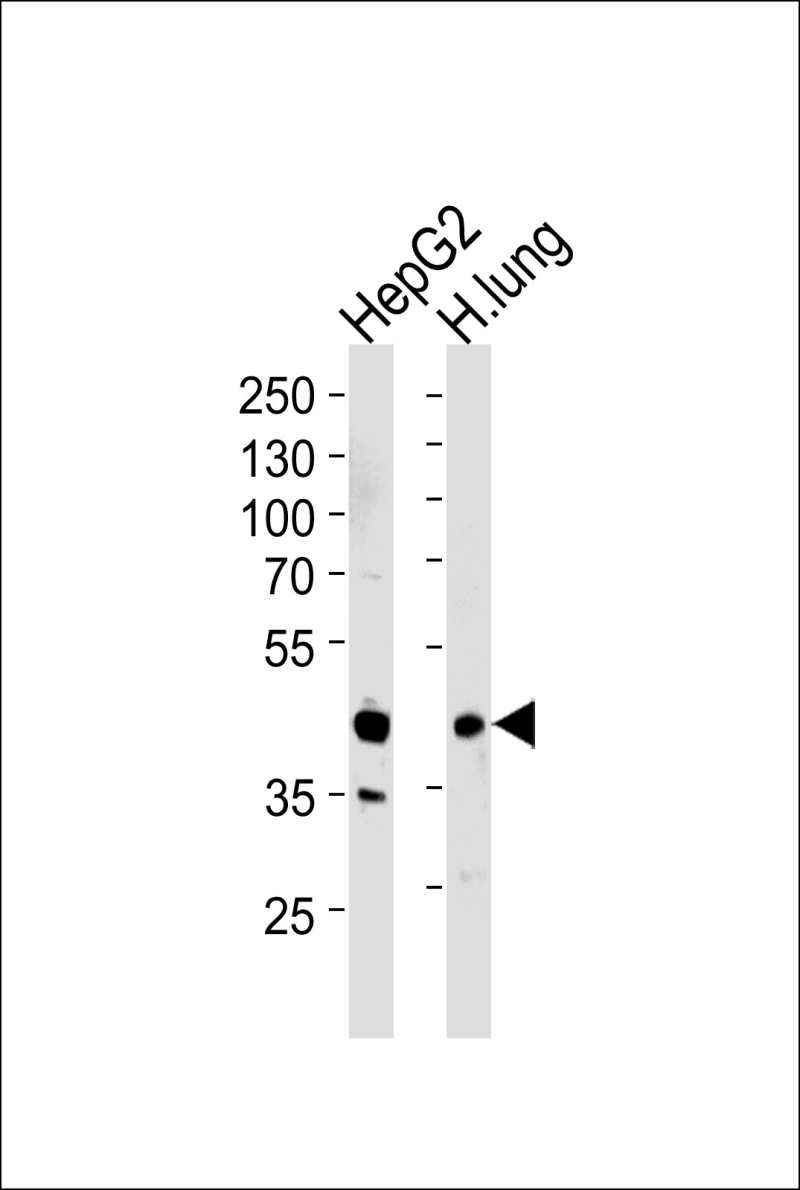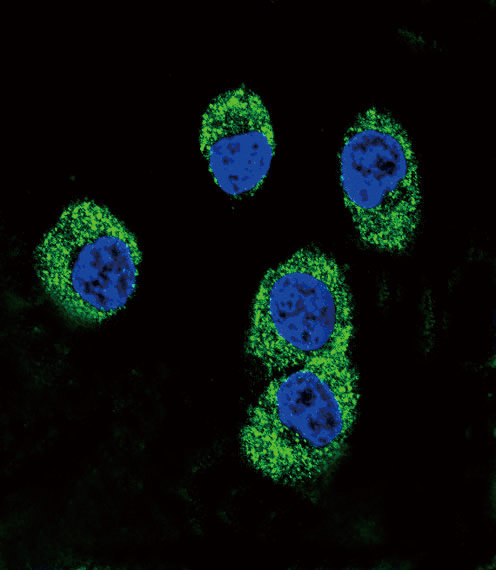

| WB | 1/1000 | Human,Mouse,Rat |
| IF | 咨询技术 | Human,Mouse,Rat |
| IHC | 咨询技术 | Human,Mouse,Rat |
| ICC | 1/10-1/50 | Human,Mouse,Rat |
| FCM | 咨询技术 | Human,Mouse,Rat |
| Elisa | 咨询技术 | Human,Mouse,Rat |
| Aliases | MAPK/MAK/MRK overlapping kinase, MOK protein kinase, Renal tumor antigen 1, RAGE-1, MOK, RAGE, RAGE1 |
| Entrez GeneID | 5891 |
| WB Predicted band size | 48.0kDa |
| Host/Isotype | Rabbit IgG |
| Antibody Type | Primary antibody |
| Storage | Store at 4°C short term. Aliquot and store at -20°C long term. Avoid freeze/thaw cycles. |
| Species Reactivity | Human |
| Immunogen | This RAGE antibody is generated from rabbits immunized with a KLH conjugated synthetic peptide between 206-234 amino acids from the Central region of human RAGE. |
| Formulation | Purified antibody in PBS with 0.05% sodium azide. |
+ +
以下是3篇关于RAGE(晚期糖基化终末产物受体)抗体的经典文献摘要概括:
---
1. **文献名称**:*RAGE mediates a novel proinflammatory axis: a central cell surface receptor for S100/calgranulin polypeptides*
**作者**:Hofmann, M. A., et al.
**摘要**:该研究首次揭示了RAGE作为S100/calgranulin蛋白家族的关键受体,在炎症反应中的作用。通过体外实验和动物模型,作者证明RAGE抗体可阻断S100蛋白诱导的NF-κB激活及炎症因子释放,提示RAGE在慢性炎症疾病中的潜在治疗靶点。
2. **文献名称**:*Blockade of RAGE-amphoterin signalling suppresses tumour growth and metastases*
**作者**:Taguchi, A., et al.
**摘要**:研究利用RAGE特异性抗体在小鼠模型中抑制RAGE与配体amphoterin的相互作用,显著减少肿瘤侵袭和转移。结果表明,RAGE信号在肿瘤微环境中通过激活MAPK和NF-κB通路促进恶性进展,抗体干预可成为癌症治疗新策略。
3. **文献名称**:*The receptor for advanced glycation end products (RAGE) is a cellular binding site for amphoterin: mediation of neurite outgrowth and co-expression of rage and amphoterin in the developing nervous system*
**作者**:Hori, O., et al.
**摘要**:该研究阐明了RAGE与amphoterin在神经发育中的相互作用。使用RAGE抗体阻断实验发现,RAGE-amphoterin轴对神经元突触生长至关重要,揭示了其在神经再生和退行性疾病中的双重作用,为阿尔茨海默病等疾病的机制研究提供依据。
---
以上文献均发表于高影响力期刊(如*Cell*、*Nature Medicine*),聚焦RAGE抗体在疾病机制解析及治疗中的应用。如需具体年份或期刊信息,可进一步补充。
The receptor for advanced glycation end products (RAGE) is a cell surface protein belonging to the immunoglobulin superfamily, initially identified for its role in binding AGEs—harmful compounds formed during prolonged hyperglycemia or oxidative stress. Structurally, RAGE contains extracellular immunoglobulin-like domains, a transmembrane region, and a short cytoplasmic tail. Beyond AGEs, it interacts with diverse ligands, including HMGB1. S100 proteins, and amyloid-β, linking it to inflammation, diabetes complications, neurodegeneration, and cancer.
Under physiological conditions, RAGE supports tissue repair and immune responses. However, chronic activation promotes pathological signaling through pathways like NF-κB, driving sustained inflammation, oxidative stress, and cellular dysfunction. This duality makes RAGE a critical target in chronic diseases such as diabetic nephropathy, atherosclerosis, Alzheimer’s disease, and tumor metastasis.
RAGE antibodies are essential tools for studying receptor expression, localization, and ligand interactions in disease models. Therapeutically, neutralizing RAGE antibodies aim to disrupt harmful signaling, potentially mitigating tissue damage. Preclinical studies show promise in reducing inflammation and fibrosis, though clinical translation remains challenging due to RAGE’s complex biology. Current research focuses on optimizing antibody specificity and exploring combination therapies. Understanding RAGE’s multifaceted roles continues to reveal insights into disease mechanisms and therapeutic opportunities.
×